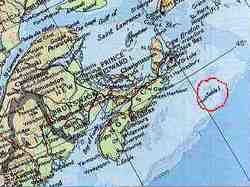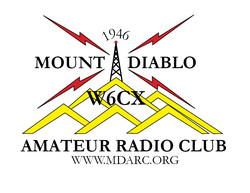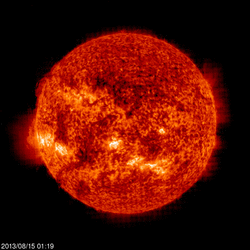 August 15, 2013 John E. Ross, KD8IDJ, Editor
| |||||||||||||||||
Regulatory: FCC Sets Higher Vanity Call Sign Fee Than First Proposed A new FCC regulatory fee of $16.10 to apply for an Amateur Radio vanity call sign will become effective sometime in mid-September, when the new fee schedule appears in the Federal Register. (ARRL will report the exact date as soon as it becomes available.) Earlier this year, the FCC had proposed upping the vanity call sign fee from its current $15 to $15.20. The vanity call sign fee has fluctuated over the 17 years of the current program -- from high of $50 when the program debuted in 1996 to a low of $11.70 in 2007.
In a Report and Order in MD Docket 13-140, released August 12, the FCC ordered a broad schedule of new fees for all services and waived the usual 30-day waiting period following Federal Register publication, because there would not be time for new fees to become effective before the start of the new federal fiscal year on October 1, 2013. The FCC says it expects $230,230 in revenue to cover the costs of administering the vanity call sign program. It anticipates 14,300 vanity call sign applications. Applicants must pay the regulatory fee not only when applying for a new vanity call sign, but also when renewing a vanity call sign (those holding "heritage" vanity call signs issued prior to 1993 are exempt). The ARRL VEC will process license renewals for vanity call sign holders for a modest fee. The service is available to ARRL members and nonmembers, although League members pay less. Regulatory: FCC Should Retain Oversight of Equipment Certification Process, ARRL Says
In reply comments filed July 31 on an FCC proposal to alter its Part 2 equipment certification process, the ARRL suggests that the Commission not be so quick to delegate greater authority to private telecommunication certification bodies (TCBs). The FCC's equipment authorization program aims in part to ensure that RF devices imported, marketed and used in the US comply with Commission rules and not cause harmful interference. The ARRL said it agrees with the National Association of Broadcasters (NAB), which expressed concern about the current level of TCB performance and advised against outsourcing all equipment authorization functions to TCBs. At present, the FCC still conducts evaluations for initial approval of devices requiring certification. It also approves certain "exempt" equipment, including devices that operate in UHF bands on which Amateur Radio is secondary. "This is not a docket proceeding that directly affects the Amateur Service," the ARRL said in its reply comments. "However, the track record for TCB certification of RF devices in terms of errors and ill-advised grants of certification is abysmal. FCC lab staff constantly has to review and set aside TCB grants of RF equipment." As an example the League cited the TCB grant of the ReconRobotics licensed, non-broadcast video transmitter. "The inadequacies of the TCB's evaluation of this device were visited on the Amateur Service," the ARRL told the FCC. The ARRL reminded the FCC that the League subsequently discovered several errors in the authorization application and the TCB grant of certification. The Commission is still reviewing the League's complaint, three years after it was filed. The League also said it agrees with the NAB that the TCB certification process is less transparent than it should be. "The public is not informed about TCB equipment authorization grants until after the fact, at which time an equipment manufacturer may have already sold large numbers of a non-conforming product if a TCB made an error in the grant," the League said. Further, the League said, the public should be informed regarding TCBs' level of accuracy and reliability. The League said that, as a general matter, Commission enforcement of equipment authorization rules "is the proper task of the Commission's staff," and urged that the FCC, not a TCB, resolve complaints. "ARRL is concerned that the reliability of TCBs exhibited heretofore is not sufficiently high to justify the proposed extensive delegation of the evaluation of more complex types of equipment authorizations, where interference potential is significant or where RF exposure is an issue," the League concluded. Events: WRTC-2014 is Accepting Applications for Team Leaders
World Radiosport Team Championship 2014 (WRTC-2014) is accepting applications from individuals who would like to participate in WRTC-2014 as team leaders. Prospective team leaders must use the application form on the WRTC-2014 website, and applications are due by September 13, 2013. WRTC-2014 is a competition among two-operator teams, and 54 team leaders will be selected from the top qualifiers in 29 regions from around the world. Each team leader then selects a teammate for the competition. The team leader qualification formula considers 12 scores selected from 55 qualifying events between October 2010 and March 2013. "With the publication of the results from the final qualifying event, we are ready to open the competitor application process," said WRTC-2014 Chairman Doug Grant, K1DG. "It will be exciting to see who earns a place in the competition." Three-time WRTC gold medalist (with Jeff Steinman, N5TJ) Dan Street, K1TO, is leading the competitor selection process. "We encourage all of those with high rankings to apply, because it is possible that some of those with higher scores in your selection area may choose not to apply," he said. "We will select two wild card team leaders from those applications that did not earn a spot as a team leader." The 55 qualifying events included 30,814 operators who produced 141,787 scores! The qualification standings are on the WRTC-2014 website. In addition to the regional qualifying, a youth team slot is reserved for a contest team with both members younger than age 25 before July 2014. WRTC 2014 expects to announce the team leaders by the end of September. For more information visit the WRTC-2014 website or contact WRTC-2014 Chairman Doug Grant, K1DG. -- WRTC-2014 Events: Lighthouse Lightship Event Anticipating Record Participation A record number of participating Amateur Radio stations are expected for the International Lighthouse Lightship Weekend (ILLW) August 17-18, sponsored by the Ayr Amateur Radio Group in Scotland.
The annual event, now in its 16th year, aims to promote public awareness of lighthouses and lightships and the need for their preservation and restoration, as well as to promote Amateur Radio and foster international goodwill. It sees hundreds of hams getting on the air from or in the vicinity of lighthouses and lightships. So far more than 450 participants are registered. Stations will be on the air from the Americas, Europe, Asia, Africa and Oceania; activations have taken place from 85 countries since the ILLW began in 1998. Registered stations and event guidelines are on the ILLW website. Read more. -- Thanks to Jim Linton, VK3PC; ILLW Events: AMSAT Issues Second Call for Annual Meeting Papers
AMSAT has issued a second call for papers for the 2013 AMSAT Annual Meeting and Space Symposium, set for November 1-3, 2013, at the Marriott Hobby Airport Hotel, Houston, Texas. Proposals for papers, symposium presentations and poster presentations are invited on any topic of interest to the Amateur Radio Satellite community. AMSAT requests a tentative presentation title as soon as possible. Final copy is due by October 1 for inclusion in the printed Proceedings. Send abstracts and papers to Dan Schultz, N8FGV. -- Thanks to Dan Schultz, N8FGV Events: Dayton RTTY Contesting Dinner to Return in 2014 After a 10 year hiatus, the Dayton RTTY Contesting Dinner will be back next year. Fred Dennin, WW4LL, reports that the dinner will be held Thursday evening, May 15, 2014, at the Crowne Plaza Hotel in downtown Dayton. "RTTY contesting is the fastest growing segment of radiosport," Dennin says, "and I hope that many of you will take an interest in joining us at the RTTY Contesting Dinner at Dayton in May 2014." Dennin will host the dinner, and he is working now to pin down a guest speaker and door prize sponsors. (Sponsors already committed include the ARRL, Array Solutions and the Louisiana Contest Club.) He asks anyone who is willing to donate a door prize to contact him. More information will be posted as it becomes available. Propagation: The Sun is About to Flip Scientists predict that the sun's magnetic field is about to flip, according to a NASA Science article. The celestial event may mark the midpoint of the current solar cycle 24. "It looks like we're no more than 3 to 4 months away from a complete field reversal," the article quotes solar physicist Todd Hoeksema, the director of Stanford University's Wilcox Solar Observatory. "This change will have ripple effects throughout the solar system." As the article explains, the sun's magnetic field switches polarity approximately every 11 years at the peak of each solar cycle. The pending reversal means we're halfway through the current cycle. Wilcox is one of the world's only observatories that monitor the sun's polar magnetic fields. NASA says that since 1976 magnetograms at Wilcox have recorded three "grand reversals" -- with a fourth in the offing.
Solar physicist Phil Scherrer, also of Stanford, explains it this way: The sun's polar magnetic fields "weaken, go to zero, and then emerge again with the opposite polarity. This is a regular part of the solar cycle." The effect of the change in the heliosphere are felt all the way out to the edges of interstellar space. The flip also affects cosmic rays, which pose a danger to astronauts and space probes, and, according to some researchers, may affect Earth's cloud cover and climate. "The sun's north pole has already changed sign, while the south pole is racing to catch up," says Scherrer. "Soon, however, both poles will be reversed, and the second half of solar max will be underway." A ScienceCasts video, "Solar Max Double Peaked," linked from the article, quotes Dean Pesnell of the Goddard Space Flight Center as predicting a double peak to cycle 24. Pesnell believes that cycle 24, which saw peak sunspot numbers in 2011 followed by a dip in 2012, could rebound later this year and into 2014 -- possibly 2015. Read more. Public Service: MARS Members Complete "High-Pressure Test" of Messaging Capacity
Army MARS, with support from Air Force MARS members, underwent a high-pressure test of natioinwide messaging capacity August 3-4, under the watchful eye of the Army's chief of network communications. Major General Alan Lynn, commander of the Network Enterprise Technology Command (NETCOM), personally launched the six hour drill, which measured performance of the volunteer radio operators under heavy traffic conditions. The exercise included relay of encrypted data between individual members in the 50 states and the headquarter station at Fort Huachuca, Arizona. General Lynn, in a voice broadcast opening the test, termed the operation a "national crisis exercise." The scenario called for breakdown of normal channels, including cell phones and the Internet, with MARS and other unspecified military assets replacing essential circuits. "Your support is critical to troop morale and critical to the nation," Lynn told the participants. "Thank you for your service to the nation, you are a great joint capability." A formal assessment of the system's performance will await after-action reports from state and regional directors, but Bob Mims, volunteer manager of the Army MARS National Net, noted "some black holes that had significant propagation problems that we need to address." The Military Auxiliary Radio System is a Department of Defense unit for specially-trained Amateur Radio operators who volunteer their skills and equipment to support government communications when normal channels are disrupted. Separate branches exist for the Army, Air Force and Navy-Marine Corps. -- Army MARS Technology: Popular "MM" Applications Released for Open-Source Development Mako Mori, JE3HHT, the author of MMTTY, MMVARI and MMSSTV, has released these applications to open-source development under the LGPL license. This license enables developers and companies to use and integrate MMTTY, MMSSTV and MMVARI, while ensuring that all improvements to source code are made publicly available. MM-Open has been established to encourage and facilitate open source development. Anyone may create public or private branches of these applications. A set of committers will maintain a master branch for each application (the initial committers are Bob, N4HY; Eric, KE5DTO; Oba, JA7UDE, and Steve, N5AC). Packaged versions of MMTTY, MMVARI, and MMSSTV assembled from the master branches will continue to be available from MM Hamsoft. Source code for these applications is available via GitHub, courtesy of FlexRadio. Existing Yahoo Groups will continue to be used to convey defect reports and enhancement requests. -- Thanks to Dave Bernstein, AA6YQ, secretary, MM-Open Organizations: AMSAT-NA Board of Directors Balloting Underway
Ballots to elect members to the AMSAT-NA Board of Directors have been mailed to members in good standing as of July 15. Completed ballots must be returned to the AMSAT-NA office by the close of business on September 15, 2013. AMSAT members who did not receive ballots by August 5 should contact the AMSAT Office. Eight candidates are running for seats on the Board of Directors, and the four candidates receiving the highest number of votes will be seated for two year terms. The two candidates receiving the next highest number of votes will be non-voting alternate Board members, with terms of one year. Candidates in alphabetical order by last name are Barry Baines, WD4ASW; Alan Biddle, WA4SCA; Steve Coy, K8UD; Frank Griffin, K4FEG; Mark Hammond, N8MH; Brian Klofas, KF6ZEO; JoAnne Maenpaa, K9JKM, and Tony Monteiro, AA2TX. -- AMSAT News Service Radiosport: 2013 ARRL 10 GHz and Up Contest Just Ahead! The weekends of August 17-18 and September 21-22 will give adventurous radio amateurs the ideal opportunity to explore the microwave portion of the radio spectrum with the 2013 ARRL 10 GHz and Up Contest. The contest period on both weekends runs from 6 AM local time on Saturday until midnight local time on Sunday. Participants earn points based on the distance of each QSO, and operating from several locations -- mountain-topping is popular -- during the event is not only allowed, it's encouraged!
Most participants use SSB, although CW sometimes is a better bet. In contrast to the typical HF contest paradigm, most stations on the microwave bands run only several hundred milliwatts, making up the difference with gain dish antennas. Operators might experience the thrill of completing a contact by bouncing a signal off a mountain or building or even off raindrops! Contact coordination typically takes place on 2 meter SSB. Tropospheric openings have also been known to occur and boost propagation. Past participants have worked up to 900 miles on 10 GHz! Interested? A list of VHF/UHF/SHF clubs is available on the ARRL website. Send paper logs to ARRL 10 GHz and Up Contest, 225 Main St, Newington, CT 06111. Radiosport: The Rookie Roundup Returns to RTTY The Rookie Roundup returns to RTTY Sunday, August 18, 1800 UTC through 2359 UTC. Here's the perfect chance for new operators (licensed 3 years or fewer) to learn the skills of RTTY contesting. Rookie Roundup events take place three times a year: SSB in April, RTTY in August and CW in December. The Contest Branch reminds participants that there is a multioperator category, so several rookies can operate from one station, using the same call sign and name, regardless of the operator. Rookie operators forming teams must register them on the ARRL website.
"This is a terrific opportunity for seasoned operators to open up their stations to newcomers who may not yet have their own stations," said ARRL Contest Branch Manager Mike DeChristopher, N1TA. "Elmering is a critical component of the Rookie Roundup, and Old Timers are encouraged not only to get on and work the Rookies, but to host Rookies and assist them in learning how to participate in RTTY competition." Participants may log using the forms available on the ARRL website (click on +RTTY Returns to Rookie Roundup). Submit your score via the form on the ARRL website. Participants have 3 days to submit score summaries after the contest ends. Contact Mike DeChristopher for more information. People: Veteran DX QSL Manager W3HNK Marks 50 Years of Service It's been 50 years this month since now-veteran QSL manager Joe Arcure, W3HNK, began serving as a QSL manager for DX stations, starting with ZE4JS (Southern Rhodesia, now Zimbabwe). Since then he has handled QSLing chores for more than 400 DX stations, and anyone with DX QSL cards likely has one in the collection that W3HNK handled.
Licensed in 1956, W3HNK was bitten by the DX bug the following year and, as he puts it on his QRZ.com page, "was off in a world of DX chasing." He has operated from several spots in the Caribbean under various call signs. Joe says that after he signed aboard as QSL manager for ZE4JS, he "kept adding call signs through the latter part of the 1960s, all the 70s, 80s and 90s," and the rest is history. Although he retired in 1998, Joe remains "active with the pasteboards," as he puts it. W3HNK is a member of the CQ DX Hall of Fame, class of 1979, and of the ARRL. Congratulations, Joe, and thanks for your service to the DX community! -- The Daily DX, QRZ.com People: Veteran Ham-Astronaut Michael Foale, KB5UAC, Retires NASA astronaut Mike Foale, KB5UAC, who was active on ham radio from both the Russian Mir space station and the International Space Station, is departing NASA after a 26-year career, the space agency has announced. In 1997 he spent 145 days aboard Mir, making numerous ham radio contacts with earthbound hams. In 2003-2004 he was the Expedition 8 crew commander aboard the ISS for 194 days. During his ISS tour, the British-born Foale set up the Amateur Radio on the International Space Station (ARISS) Phase 2 equipment, a Kenwood TM-D700E dualband transceiver, in the Zvezda Service Module. He also conducted four spacewalks during his time with NASA.
"We salute Mike and his contributions to NASA as an accomplished member of the astronaut corps," NASA Administrator Charles Bolden said. "I know Mike will go on to do more great things as he continues to support the aerospace industry in his new endeavor." Most recently Foale, 56, worked in support of Soyuz and ISS operations, as well as space station spacewalk activity and spacesuit development. His future plans include advancing green aviation technology. -- NASA; ARISS DX: DXpedition Plans Shaping Up Plans by one Canadian and two Americans to mount the CYØP DXpedition to Sable Island October 1 to October 11 are well underway.
The CYØP team includes VE1RGB, AI5P and WA4DAN, who coordinated two previous CYØ DXpeditions, including one in October 2012 cut short by Hurricane Sandy. The trio plans to operate CW, SSB and RTTY on 160 through 10 meters. VE1RGB plans to operate S&P in the California QSO Party October 5-6 as VE1RGB/CYØ. Located off the coast of Nova Scotia, Sable Island (NA-063) is the 59th most-wanted DXCC entity, according to the ClubLog DXCC Most Wanted List. The group will log on paper. QSL via VE1RGB (no LoTW, eQSL or ClubLog) or via the bureau.
Separate DXpeditions this fall and winter will make Saint Vincent and the Grenadines more available for DXers. The first -- and larger -- J88HL DXpedition is planned for November 17-29 by seven operators from Poland -- SP2EBG, SP3CYY, SP3GEM, SP6EQZ, SP6IXF, SP9FOW and SP9PT. While considering possible destinations, they noticed that J8 -- which is the 116th most-wanted DXCC entity, according to the ClubLog DXCC Most Wanted List. -- hasn't seen a major DXpedition in recent years. SP6EQZ says this is will not be a "holiday operation" but a dedicated radio activity on all HF bands, a serious effort on 160 and some operation on 6 meters. At least three stations will be on the air 24 hours a day on CW, SSB and RTTY. One operator may participate in the CQ World Wide DX CW in a single-operator category, while the others will operate outside the contest. QSL direct or via the bureau. February 10-17 will see the Caribbean Buddies DX Group "enduring the hardships of DXing from Isis Villa on Bequia." This will be a lower-key "suitcase" DXpedition with Buddipole antennas and wires and 100 W transceivers -- the group's equipment complement of choice. J88EA is a possible call sign. -- Thanks to The Daily DX DX: Myanmar Station on the Air! The Daily DX reports that Zorro Miyazawa, JH1AJT, is currently on the air as XZ1Z from Naypyidaw, Myanmar (formerly known as Burma), while on a humanitarian mission. He received Amateur Radio operating permission on August 13 from the Ministry of Communications and Information Technology, and he expects to be on the air in his very limited spare time until August 17. His operating permission is valid until September 12. He is equipped with a Kenwood TS-590 and two ground plane antennas for 20 and 17 meters and has been active on SSB on both bands (spotted on 14.250, 18.125 and 18.145 MHz). He will return to Myanmar in September. Myanmar is the 24th most wanted DXCC entity, according to ClubLog. QSL to JH1AJT, PO Box 8, Oiso, Naka-gun, Kanagawa 259-0111, Japan. -- Thanks to Jay S. Oka, JA1TRC Police Beat: Vandalized Tower Incident Has Silver Lining
When vandals toppled the tower supporting the Mount Diablo Amateur Radio Club's APRS digipeater, the club decided to move its gear from Rocky Ridge, in the hills above Danville and San Ramon, California, to the North Peak of Mount Diablo. After recovering the digipeater hardware from Rocky Ridge on August 2, a team of five members of the MDARC Tech Committee the next day climbed the North Peak of Mount Diablo in a 4×4 truck re-installed the APRS digipeater and installed an amateur TV station. "The digipeater, now 1000 feet higher in elevation, helps to cover an area with a radius as much as 150 miles," says MDARC President Jim Siemons, AF6PU. "According to APRS.fi, the region had virtually no APRS coverage since the collapse of the Rocky Ridge Tower. Now, a much larger area has superior coverage, and [this] may actually lead to APRS devices becoming more popular among ham operators." Authorities suspect that vandals in late July cut several guy wires supporting the Rocky Ridge radio tower in the hills of the Las Trampas Regional Wilderness, causing the 200 foot structure to topple. Police are still investigating. -- Thanks to Jim Siemons, AF6PU Funkamateur FiFi SDR Ordering Function Offline In "Product Review" in the September issue of QST we reviewed Funkamateur's FiFi software-defined receiver. On page 52, we direct members to order from the Funkamateur online-shop website. Unfortunately the ordering function at that site has gone offline, due to a problem with AT&T (nothing happens when you click ADD to CART). Funkamateur advises that the problem may not be resolved until early next week. Solar Update Tad "Black Hole Sun" Cook, K7RA, in Seattle, reports: Again this week, solar activity was unchanged, with average daily sunspot numbers budging from 85.4 to 85, and average daily solar flux increasing 4.4 points to 111.7. Geomagnetic conditions were stable.
The latest solar flux prediction from USAF/NOAA has flux values of 125 on August 15-16, 130 on August 17, 125 on August 18-19, 120 on August 20-21, then 110, 100 and 105 on August 22-24, 110 on August 25-26, 115 on August 27-29, 110 on August 30, and 105 on August 31 through September 6. Predicted planetary A index is 15 on August 15, 8 on August 16-17, 5 on August 18-20, then 10, 15 and 10 on August 21-23, 5 on August 24-30, then 12, 15, 10, 5 and 8 on August 31 through September 4, and 5 on September 5-7. In tomorrow's bulletin watch for updated short-term forecasts and comments about solar cycle peaks. This Week in Radiosport
Upcoming ARRL Section, State and Division Conventions and Events
To find a convention or hamfest near you, click here. ARRL -- Your One-Stop Resource for Amateur Radio News and Information Join or Renew Today! ARRL membership includes QST, Amateur Radio's most popular and informative journal, delivered to your mailbox each month. Subscribe to... NCJ -- National Contest Journal. Published bi-monthly, features articles by top contesters, letters, hints, statistics, scores, NA Sprint and QSO Parties. QEX -- A Forum for Communications Experimenters. Published bi-monthly, features technical articles, construction projects, columns and other items of interest to radio amateurs and communications professionals. Free of charge to ARRL members: Subscribe to the ARES E-Letter (monthly public service and emergency communications news), the ARRL Contest Update (bi-weekly contest newsletter), Division and Section news alerts -- and much more! | |||||||||||||||||
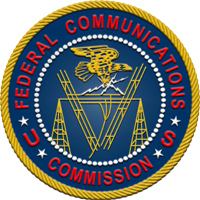

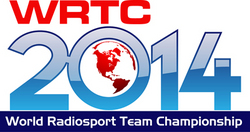
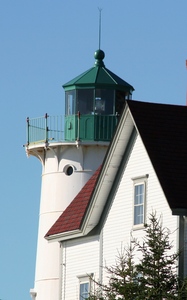
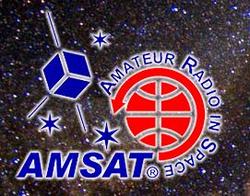

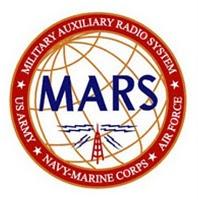
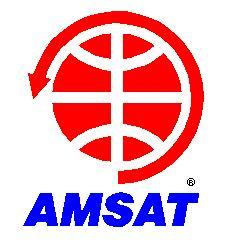
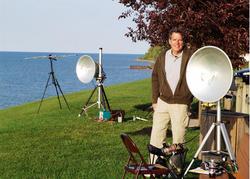
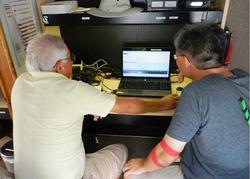
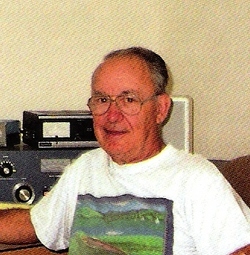
.jpg)
